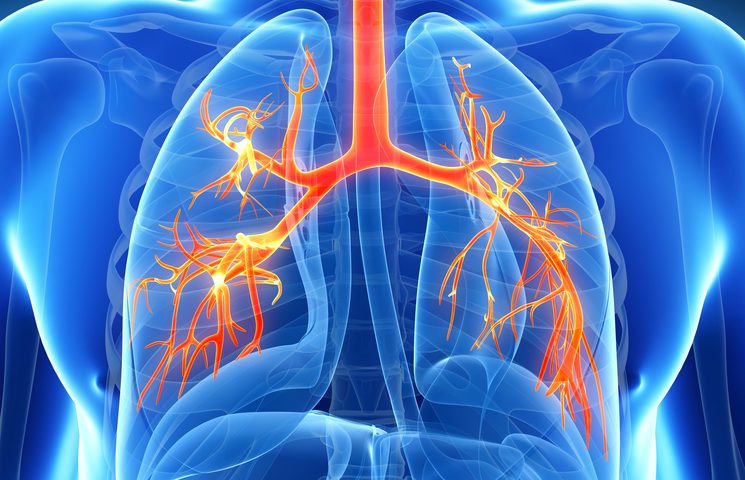Checking the lungs of COPD and bronchiectasis patients for a component of the fungus Aspergillus fumigatus is a good way to see whether they have the infection, a study reports.
In fact, it’s better than another commonly used method, researchers said.
The study, which dealt with levels of galactomannan in the lungs, appeared in the International Journal of Molecular Sciences. The title of the article was “Aspergillus fumigatus Detection and Risk Factors in Patients with COPD–Bronchiectasis Overlap,”
Scientists say the main cause of COPD, a common lung disorder, is inhaling pollutants such as cigarette smoke for a long time.
Bronchiectasis patients have narrowed and chronically inflamed airways. The disease usually develops from a vicious cycle of inflammation and structural damage to the lungs, difficulty clearing mucus from them, and bacterial infection.
A lot of people have both COPD and bronchiectasis. Experts estimate that bronchiectasis occurs in up to 60 percent of COPD patients and that about 30 percent of bronchiectasis patients have COPD.
Doctors need to be on the lookout for an overlap in the diseases because not only do patients with both have a worse outlook, but their treatment is different.
A. fumigatus often shows up in people with damaged airways and compromised immune systems. People taking immunosuppressive drugs such as corticosteroids are also vulnerable.
In addition to COPD and bronchiectasis, scientists have linked the fungus to unfavorable outcomes in asthma and cystic fibrosis.
Surprisingly, not much is known about it. One reason is lack of sensitive and noninvasive ways to detect it in airways.
One detection method is checking for it in sputum with a technique called polymerase chain reaction. Another way is to check galactomannan levels in airways.
Researchers decided to compare the methods to see if one is better than the other.
The sputum side of the work consisted of samples from 18 patients with COPD and 17 patients with both COPD and bronchiectasis.
Allowing whatever is in a sputum sample to grow in a lab culture is the way researchers determine what kind of bacteria is in the sample. They found A. fumigatus in 24 percent of people with both COPD and bronchiectasis, versus 11 percent of those with COPD alone.
Next the team looked at galactomannan’s ability to spot the fungus. It detected A. fumigatus in five times as many patients with the two diseases as in those with COPD alone. This meant is was an even more sensitive detector than sputum culture analysis.
Doctors use corticosteroids to treat many COPD and bronchiectasis patients. Researchers found an association between corticosteroid use and higher levels of galactomannan in the airways of patients with both COPD and bronchiectasis. Those levels, in turn, were associated with higher levels of A. fumigatus.
“The higher sputum galactomannan levels suggest a more abundant presence of A. fumigatus in the airways of patients with COPD–bronchiectasis overlap, compared with patients with COPD without bronchiectasis, particularly when systemic corticosteroids are administered,” the researchers wrote.
“Although this study does not allow us to attribute causality, our findings support the hypothesis that A. fumigatus contributes to the development and/or progression of bronchiectasis in COPD,” the team wrote, adding that “sputum galactomannan seems to provide a more sensitive marker for A. fumigatus detection in the airways.”

